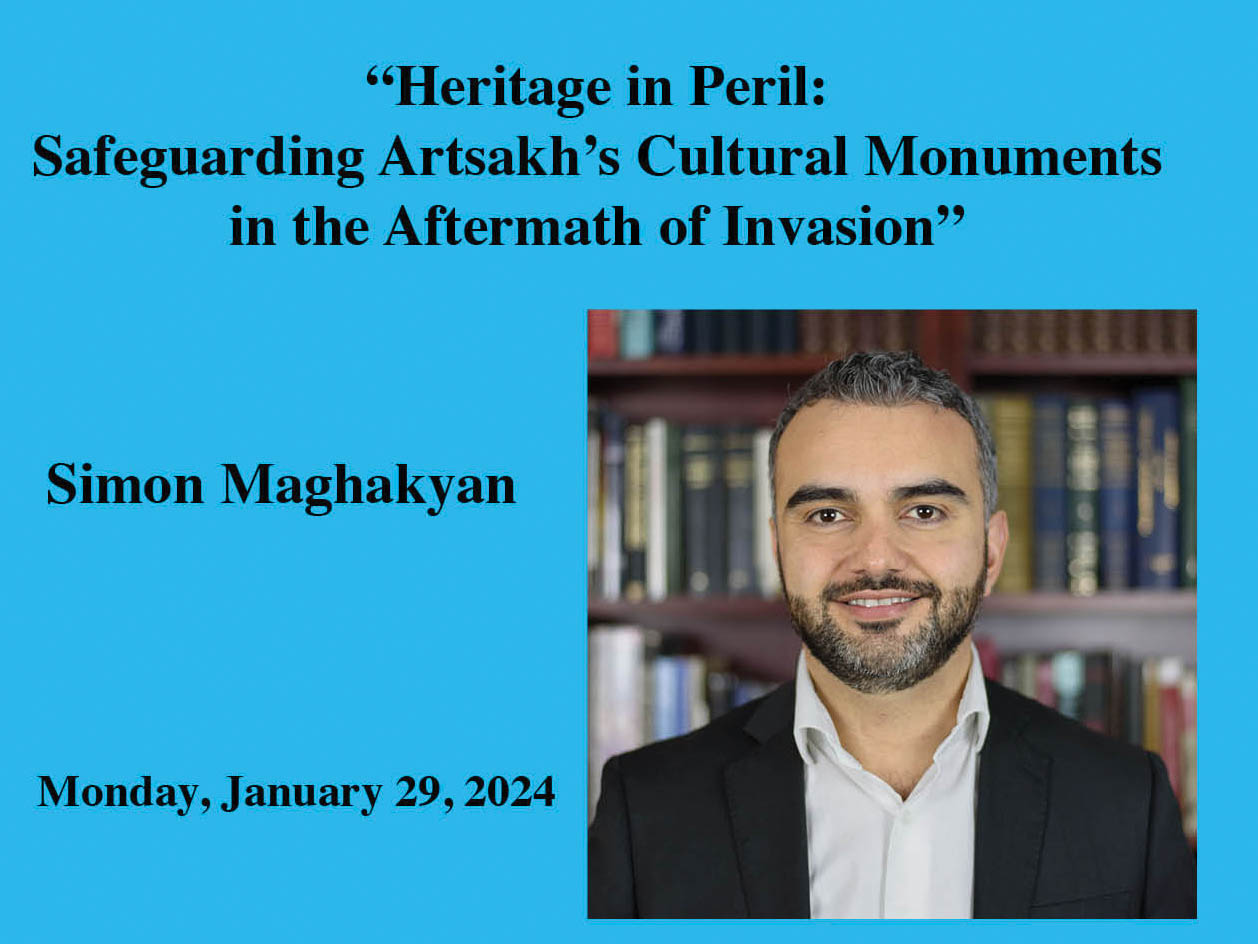 Ani Sargsyan
Ani Sargsyan
Staff Writer
“The living heritage has been displaced, and might be able to continue the intangible heritage in many ways… but the tangible heritage, especially the immovable ones, were left behind,” said Simon Maghakyan.
On Monday, January 29, 2024, guest speaker and investigative researcher Simon Maghakyan presented his findings on Artsakh’s cultural monuments in the aftermath of the Azerbaijani invasion in September 2023. The talk was titled “Heritage in Peril: Safeguarding Artsakh’s Cultural Monuments in the Aftermath of Invasion.” This Armenian Studies Program lecture was held via Zoom and moderated by ASP Berberian Coordinator Prof. Barlow Der Mugrdechian.
There are approximately 500 sites, with individual monuments numbering close to 6,000, that were left behind in the wake of the forced evacuation of the Armenian population of Artsakh in September 2023. Included in that group is the “jewel” of medieval Armenian architecture, Gandzasar Monastery (13th c.), which is no longer a place of prayer.
Since September 2023, Maghakyan reported that there have been countless occurrences of unnecessary destruction of Armenian monuments by the Azerbaijan military, not only ancient and medieval, but important parts of the landscape, such as the “Cross of Stepanakert,” overlooking the city. The removal of crosses from churches and historical sites, such as the cemetery near the Armenian Ghazanchetsots Cathedral in Shushi, have also been documented. Since other areas near the Cathedral were hardly disturbed, it can be inferred that the cemetery was a specific target of the Azerbaijani operation.
Maghakyan says current monitoring projects include satellite monitoring which is done by Caucasus Heritage Watch (https://caucasusheritage.cornell.edu/), based in Cornell University. Another organization, affiliated with the Yerevan State University, Monument Watch (https://monumentwatch.org/en/who-we-are/), utilizes a different methodology by doing indirect crowdsourcing.
Maghakyan continued his presentation by communicating the basis of the fear of cultural erasure. Since there already has been substantial destruction of Armenian sites by Azerbaijan, especially under the pretext of construction, connections and patterns can be made from past events to the ones taking place now.
The destruction that took place in the historically Armenian populated region of Nakhichevan is a significant example of era-sure. The world’s largest medieval Armenian cemetery in Julfa, which housed thousands of intricately carved khatchkars (cross-stones), many dating to the 16th century, was completely flattened by Azerbaijan in late 2005. This cemetery memorialized many people who were not only important in Armenian history, but in world history. Azerbaijan had no appreciation for these key players in history because they were proof of Armenian existence. Their motivation for erasure lies in securitization and performance legitimacy.
Maghakyan has also conducted research working with Caucasus Heritage Watch using new methodology – borrowing satellite images from the declassified Cold War era. These images provide documentation of the before and after of important historical and cultural sites.
Maghakyan then discussed some actions that could be taken to preempt a Nakhichevan scenario from happening again. Raising the cost of destruction through sanctions against the Aliyev regime is one approach, and incentivizing preservation and eliminating segregation is another.
Another method of action that could be envisioned for the future when situations are not so tense is “being more open about some of the commonalities that do exist among the two cultures instead of trying to make them sound as if they’ve never had any contact with each other may be a path forward.” More importantly, he added “understanding how much heritage mattered for the displaced population of Artsakh, and how hurtful it would be if they were to find examples of erasure” is a motivator itself for Armenian stakeholders to ensure that this does not happen again and leave no stone unturned in the process.
 Hye Sharzhoom Armenian Action
Hye Sharzhoom Armenian Action